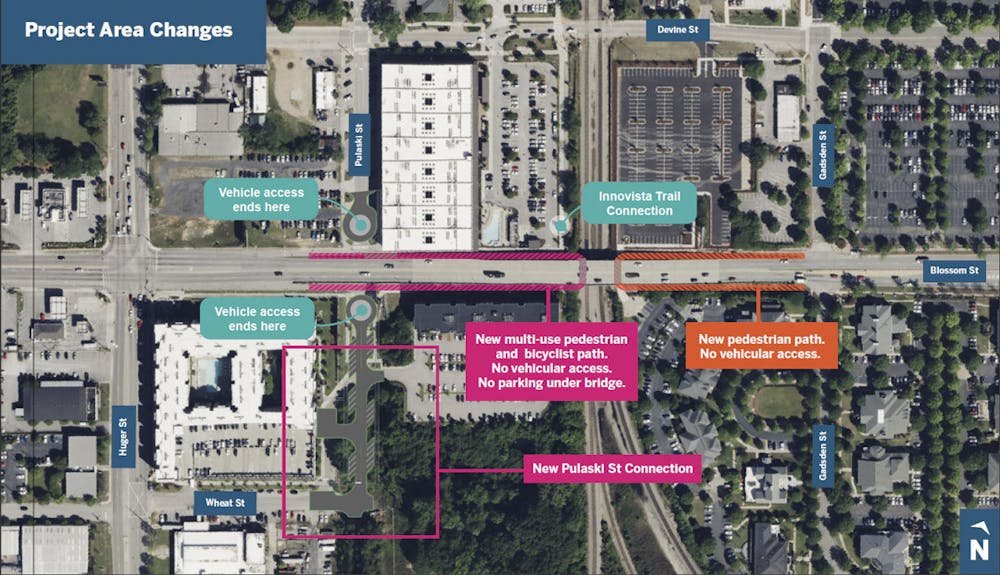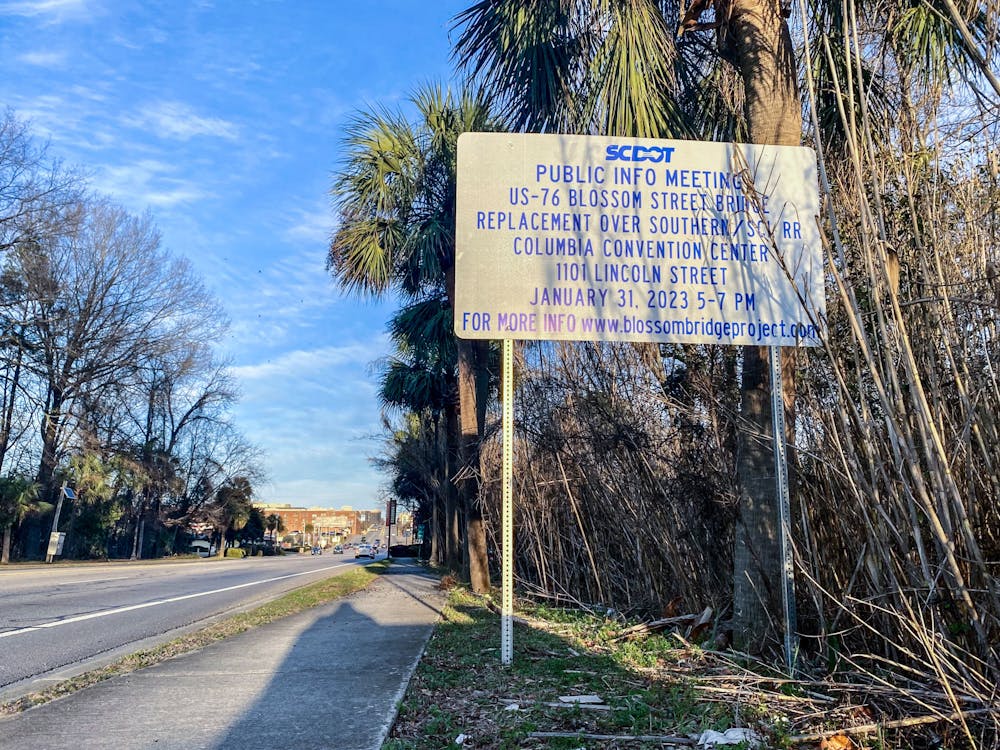Columbia’s Blossom Street bridge will be under construction starting in the summer of 2024 to replace the current bridge while also adding features to make it more pedestrian friendly.
“It was originally constructed in 1953, so it’s nearing it's end of the life cycle. It’s structurally fine now, but we’re in the process of updating that,” Joey McIntyre, Midlands program manager for the South Carolina Department of Transportation (SCDOT), said.
Launched in the summer of 2019, the federally funded project known as the "Blossom Bridge Project" is estimated to cost between $30-$40 million. Adam Humphries, a Midlands regional production engineer said they wanted the renovations to focus on improving accessibility for pedestrians.
“Not everyone has a car, so providing a safe route for people to walk. Anytime we do a new project, we try to include it if it's feasible. Here it happened to be feasible, and there were very logical other connections as well within the Vista Trail, so we're able to upgrade the pedestrian access dramatically,” Humphries said.
Additions to the bridge include a multi-use path, sidewalks, lighting and rails specific to pedestrian walkways.

“Walkways are not just going to be chain link fences. We're going to have them conform to the existing design and the improvements that have taken place," Pete Poore, director of communications for SCDOT, said, "We want this bridge to not just function as a bridge, but we want it to fit in as a piece of architecture.”
The project is also focusing on emulating the design of other structures within Columbia.
"We did try to mirror some of the upgrades done on the Greene Street Bridge, as well as some other inner vista-type aesthetics that they kind of already have set in place, at least some decorative lighting out there, they'll be a little more green area with all the sidewalks and stuff," Humphries said.
When construction takes place in the summer of 2024, McIntyre said traffic will remain open.
“There’s going to be a lot of bridge work that we’re going to be doing while traffic is still open that a lot of folks aren't even going to be aware we’re even working and then it’s going to help us accelerate the project and have a minimal impact on the Downtown,” McIntyre said.
However, traffic will be affected starting a year later as the bridge will close for six months.
“We know that we’re going to utilize the summer months when school’s out to help accommodate that extra traffic,” McIntyre said, "We think that that is going to put a lot less strain on the network for a shorter period of time,".
The project plans to use pre-stressed concrete and poured-in-place concrete, which the current bridge was constructed with, but developers plan to implement a different design.
"The bridge itself will be shorter and whereas seven spans it's going to be three, we have bigger embed walls that will tie it in — that brings it in a little closer to the railroad — and a little bit more aesthetically pleasing," McIntyre said.
The construction hasn't come without its challenges, though, as McIntyre said they have had to work to overcome problems that have arisen.
"There's challenges, obviously, with the current development in the area and existing development in the area, proposed development, making sure we coordinate with all those stakeholders, making sure that we keep everybody apprised of what our schedule looks like and coordinating with them, that's it's been a challenge, but it's also been worked out really well," McIntyre said.
The project is estimated to take about 18 months to complete, and Poore said that the finished product will aim to cater to all who want to use it.
“We hope to provide a safe and more efficient bridge that can be used by not only motorists, but by cyclists and pedestrians,” Poore said.

